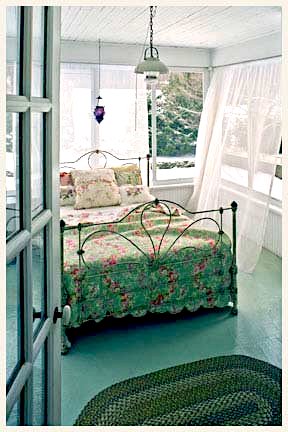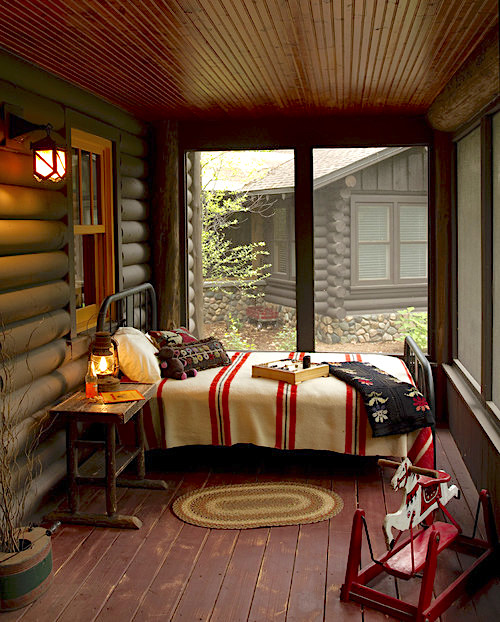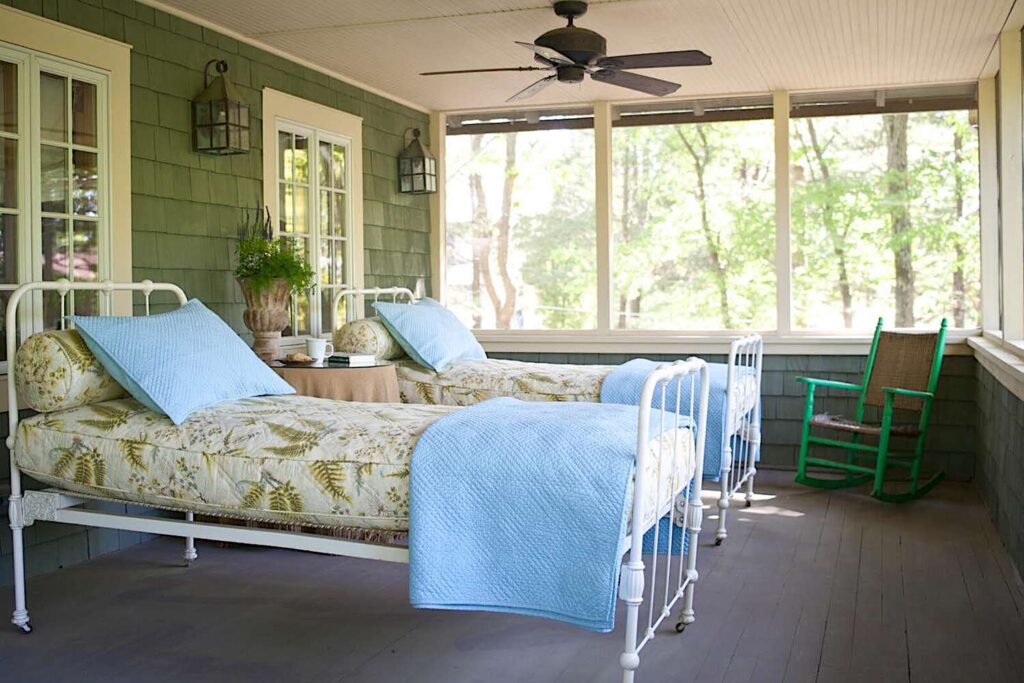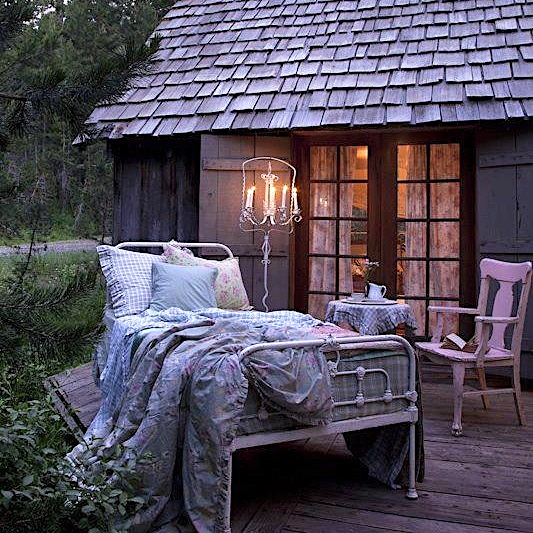In the relentless pursuit of comfort and convenience in our modern lives, we often find ourselves yearning for the simplicity and charm of days gone by. One such nostalgic relic of a bygone era is the sleeping porch, a concept that emerged in response to the stifling summer nights before the advent of air conditioning. Paired with the enduring elegance of antique iron beds, the sleeping porch is a symbol of a time when life moved at a slower pace and people sought solace in the embrace of gentle breezes under starlit skies.
Imagine a time when the sweltering heat of summer nights made restful sleep a distant dream. Enter the sleeping porch, an ingenious solution born in the late 19th century with the widespread availability of window screens in the 1880s. This architectural gem was essentially an enclosed deck or balcony with screened windows, strategically placed to capture the refreshing cross-breezes. The sleeping porch became a sanctuary where families could escape the oppressive heat, fostering a connection with nature while maintaining a comfortable and well-ventilated sleeping space.

The strategic placement of sleeping porches was crucial to their effectiveness. Typically located on a corner of the house, these airy retreats maximized exposure to cross-ventilation. This thoughtful positioning not only allowed for a cooler sleeping environment but also provided occupants with a panoramic view of the surrounding landscape. The result was a harmonious blend of comfort and aesthetics, inviting residents to immerse themselves in the natural world right from the comfort of their beds.
Central to the allure of the sleeping porch were the antique iron beds that graced these open-air sanctuaries. Characterized by their timeless design and sturdy construction, antique iron beds were the preferred choice for sleeping porches. Their inherent durability and simplicity made them easy to assemble and disassemble, allowing homeowners to adapt to changing weather conditions seamlessly. As the seasons transitioned, so did the sleeping arrangements, with beds moving effortlessly between the open porch and the coziness of the interior.
Beyond their practicality, antique iron beds possess a unique aesthetic appeal that transcends time. Craftsmen of the past poured their skill and artistry into these bed frames, creating pieces that are not only functional but also works of art. The intricate scrollwork and detailed craftsmanship of antique iron beds add a touch of romance and nostalgia to the sleeping porch, turning it into a haven of serenity.

The allure of the sleeping porch and antique iron beds lies not just in their functional aspects but in the romanticized vision of a simpler era. In a world where technology has brought unprecedented comfort and convenience, there is a certain charm in revisiting a time when life unfolded at a gentler pace. The sleeping porch offers a glimpse into a past where evenings were spent savoring the symphony of crickets and cicadas, and the only illumination came from the soft glow of the moon and stars.
In an age dominated by perfection and precision, the appeal of the sleeping porch and antique iron beds lies in their imperfections. These relics from the past remind us of a time when life wasn’t seamlessly curated for Instagram or meticulously filtered for social media. The creaking of the iron bed, the rustling of leaves in the breeze, and the unpredictable dance of fireflies all contribute to an authentic and imperfect experience that resonates with the soul.

The marriage of antique iron beds and the sleeping porch transports us to a time when simplicity was treasured, and the pursuit of comfort was intertwined with a connection to nature. As we navigate the fast-paced currents of modern life, there is an undeniable allure in revisiting these relics from the past. The sleeping porch, with its screened windows and panoramic views, becomes a haven for respite, and the antique iron bed, with its timeless design, adds a touch of romance to our nightly rituals. In embracing the imperfect beauty of these bygone treasures, we find solace and inspiration, reminding us that sometimes, the most profound comfort is found in the gentle embrace of the past.







